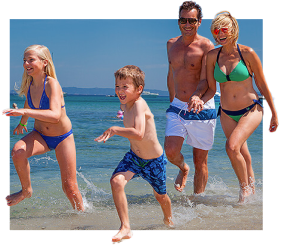Heaven on Earth
Golden Islands (Iles d’Or) on the Cote d’Azur opposite the campsite
The Hyères islands, better known as the Golden Islands (Iles d’Or), are grouped together in an archipelago at the southernmost tip of Provence, opposite Bormes les Mimosas, La Londe les Maures and Hyères. The archipelago is made up of three islands offering a wide variety of Mediterranean landscapes, both on land and at sea. The islands of Porquerolles, Port Cros and Le Levant are veritable jewels of history and biodiversity, and are a must-see.
Port-Cros National Park.
Created in 1963, the Port-Cros National Park on the Cote d’Azur on South of France comprises the two islands of Porquerolles and Port-Cros. It was one of the first national parks in France. Even back then, the beauty and fragility of the local ecosystem and biodiversity alerted the authorities to the need to protect this unique site in the Mediterranean. The richness and diversity of the fauna and flora, both on land and at sea, is an open-air jewel for all visitors. A veritable natural aquarium, the Port-Cros national park is a member of the Pelagos marine sanctuary, which guarantees the protection of marine mammals and the entire maritime ecosystem. So it’s not unusual to spot schools of dolphins or whales playing in the waves close to the coast. In the shallow waters along the beaches, thousands of fish of many species live in total harmony with man. On the land side, the scrubland is home to many endemic species that lead a peaceful life, away from human activity. A true paradise on Earth!
Porquerolles Island.
The island of Porquerolles is the largest of the three Golden Islands (Iles d’Or), located to the west of the archipelago, in the south of the region. Covering more than 12 km², it is home to a wide variety of landscapes. Scrubland, plains, steep cliffs, vineyards, wind-sheltered coves, wide beaches… Since 1971, the island has been a listed site, protected under the aegis of the Port Cros National Park, which protects the richness of the island’s terrestrial and marine biodiversity. The Conservatoire Botanique de Porquerolles works every day to protect nearly 2,000 wild species, to ensure that the island’s endemic species live on. With its 54km of footpaths, visitors can explore almost the entire island on foot or by bike. You can also visit the Fondation Carmignac, an exhibition centre dedicated to contemporary art, with some fine exhibitions on display in a majestic setting. To ensure the safety, tranquillity and preservation of the forests, particularly against the serious risks of fire and pollution, smoking, littering, dog-walking and camping are strictly prohibited outside the port and village.
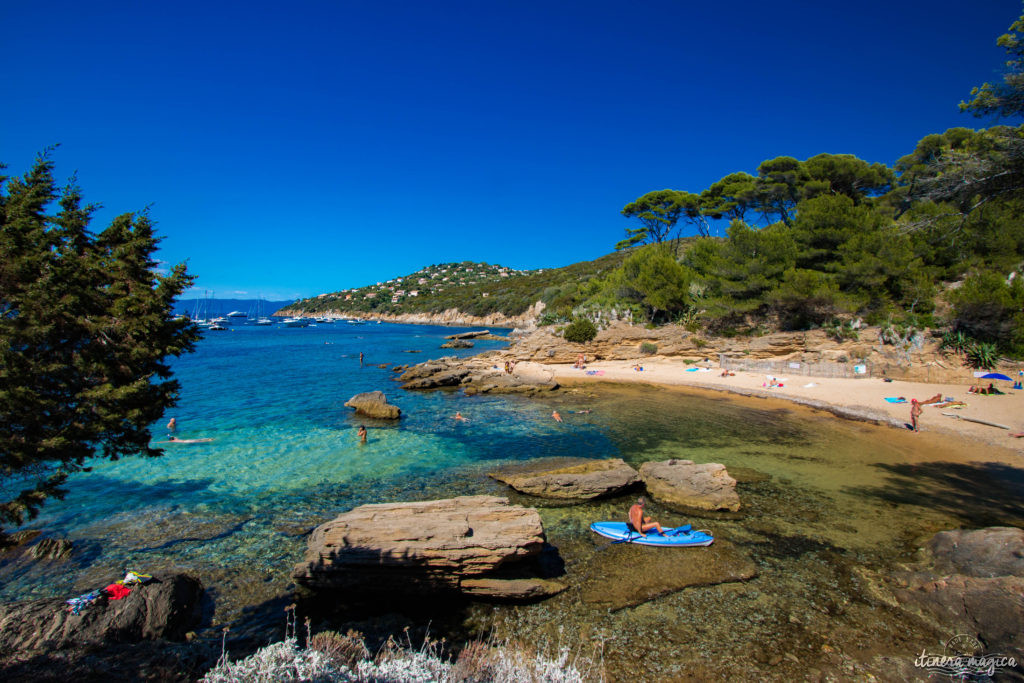
L'île du Levant (Levant Island).
Ile du Levant is a little paradise for naturists. Located to the east of the island of Port-Cros, opposite the campsite, it is the only island in the Mediterranean where naturism is compulsory both in town and on the beach. Of its 9km², barely 1 hectare is accessible to the public, the other part being a military zone. Founded in 1931 by two brothers, the village of Heliopolis (City of the Sun) on the Levand Island is an ode to bohemian life under the sun. Like its two sisters in the Isles of Gold archipelago, the island of Le Levant is wild and protects a small paradise of biodiversity: an immense forest of arbutus trees, agaves, prickly pears… So many plants that flourish with a minimum of maintenance and water, a precious resource for all the islanders. More than just a concept, naturism in the Levant is a veritable art of living in harmony with nature, in a heavenly setting away from prying eyes. Many tourists come from all over the world to spend time on the island of Le Levant, known for its idyllic beaches and wild parties. Tempted by the experience?
THE LEGEND OF THE GOLDEN ISLANDS (ILES D’OR).
Did you know? The archipelago of the Golden Islands (Iles d’Or) was once called “Stoechades”, which means “aligned” in Greek. It is the setting for a legend originally told by the Var writer Gustave Roux.
Legend has it that Prince Olbianus and his four beautiful daughters once lived on the shores of the Mediterranean. The prince loved his daughters more than anything else in the world. They were also excellent swimmers, regularly diving into the sea to cool off, and used to swim together in this unspoilt spot. One day, during their daily swim, they inadvertently strayed from the shore and spotted a pirate ship in the distance. Their father, who had also seen this flag on the horizon, implored them to return as quickly as possible to join him on dry land. In vain, unfortunately, as the unfortunate princesses, despite their physical abilities, were overtaken by the pirates sailing at high speed. The prince implored the heavens to spare his beloved daughters from these accursed pirates. The gods were moved by the prayers of this destitute father and decided to intervene just as one of the buccaneers grabbed one of the girls. An intense light flooded the sea and the princesses froze in the water. Eventually, their entire bodies turned to stone, forcing the pirates to let go of their hold. This is how the three eldest sisters came to form the archipelago of the Golden Islands (Iles d’Or), with the islands of Levant, Port-Cros and Porquerolles. As for the younger sister, who was closer to the coast than her elders, she was frozen in place as she stretched out her arm towards her father on the shore to form the Presqu’île de Giens in Hyères. The islands are nicknamed the Golden Islands (Iles d’Or) for the beauty they exude, as were the princesses in their day…
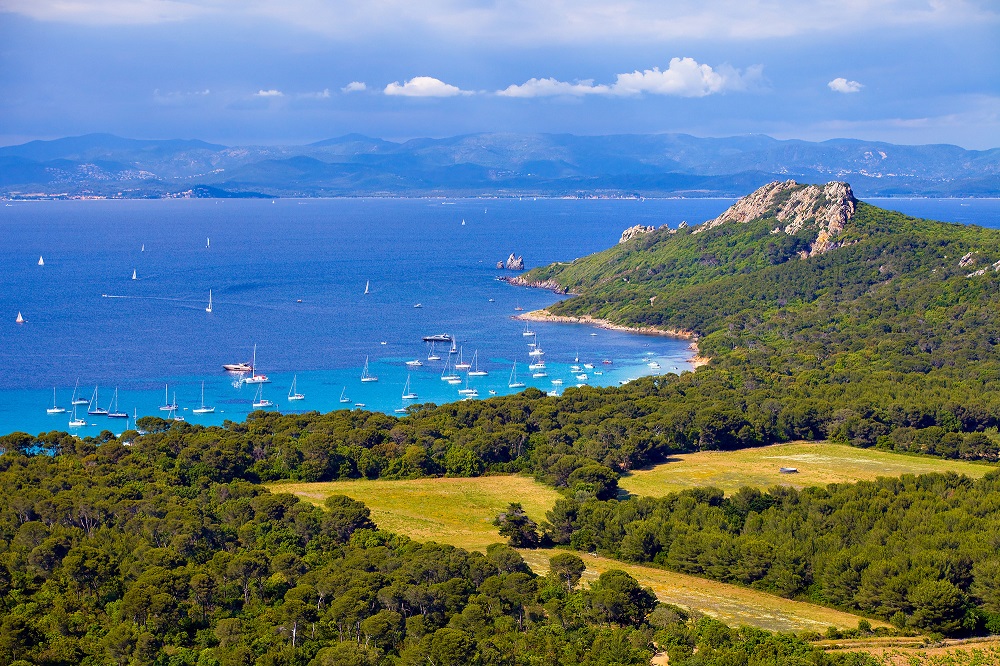
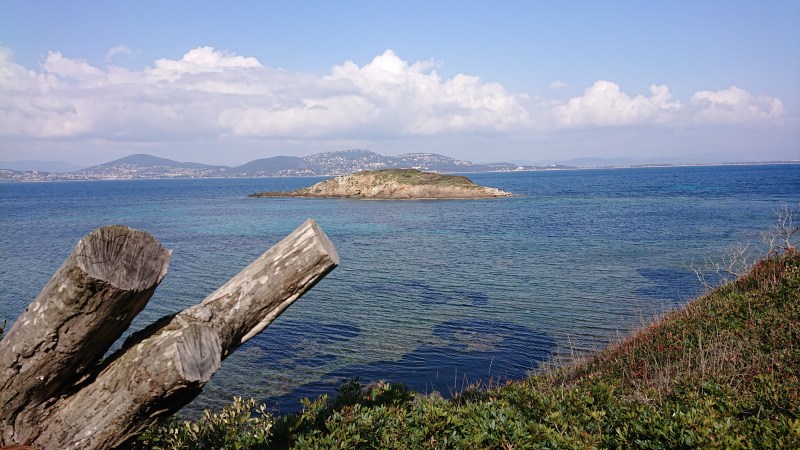
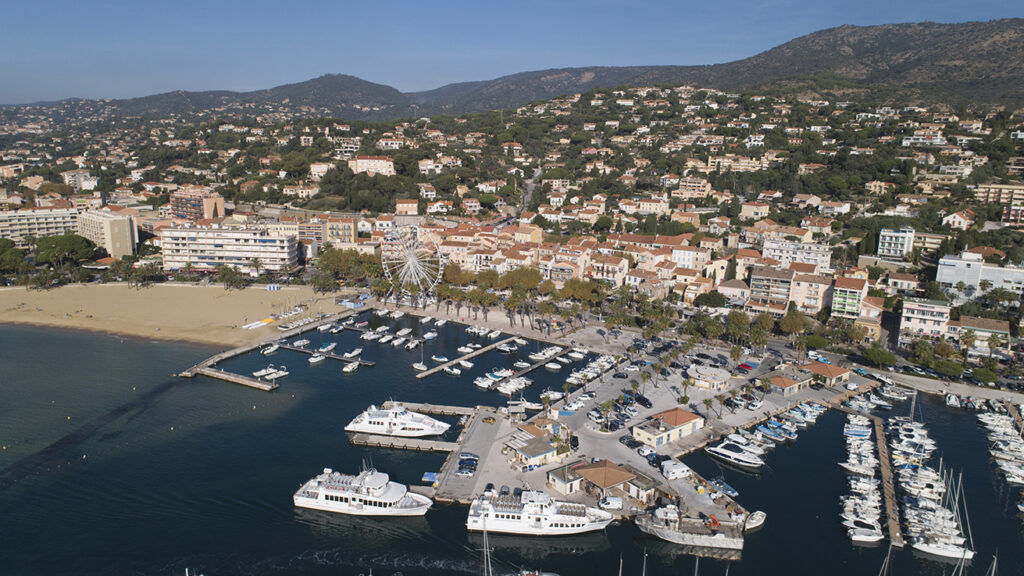
Getting to the Golden Islands (Iles d’Or).
All year round, and particularly between spring and autumn, a large number of shuttles operate daily between the mainland and the Golden Islands (Iles d’Or). In the immediate vicinity of the campsite, at the port of Bormes les Mimosas or Le Lavandou, two companies offer crossings to the island of your choice. You can get there on foot or by bike in just a few minutes from your pitch or accommodation, and spend a timeless day discovering nature in its prime.
Make sure you book your ticket well in advance, especially during the summer season.
- Boarding at the port of Bormes les Mimosas: Lattitude Verte (https://www.latitudeverte.fr/)
- Boarding at the port of Le Lavandou: Vedettes des îles d’Or ( https://www.vedettesilesdor.fr/)
Practical information:
Where to park to get to the Golden Isles
If you are lucky enough to be staying at the Camp du Domaine campsite, you can walk or cycle to the Bormes les Mimosas or Le Lavandou landing stage, and leave your vehicle parked safely and free of charge on your campsite pitch or next to your accommodation. Alternatively, there are car parks around the two ports, most of which charge a fee, where you can park your vehicle. However, in high season, parking spaces are scarce and we advise you to arrive a little early if you don’t want to miss the departure of the shuttle bus.
Cycling around
Bicycles are not permitted on all the islands. It is only possible to cycle on the island of Porquerolles. Depending on the company, you may be able to take your own bike on board the shuttle bus for a fee. You can also hire a bike on arrival or by booking with one of the many electric and non-electric bike hire companies located in the port. You can enjoy beautiful walks along the sandy beaches or through the green hills. A map of the Porquerolles cycle routes shows the different paths and their level of difficulty.
Eating out
At the port and on the 3 islands, you’ll find plenty to eat at any time of day. If you prefer to eat out in the countryside, plan a picnic on the beach or in the heart of the forest. Make sure you bring enough water for your journey! Apart from at the port, there are no drinking water points on the islands. Be careful with your rubbish – nature is precious, and the police are strict!



